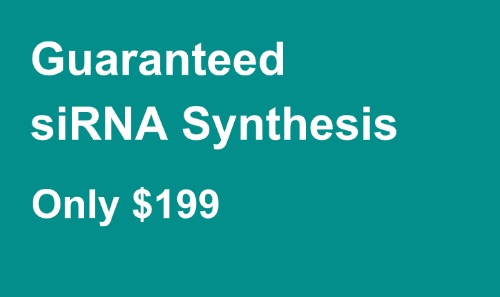General Introduction of CpG ODNs
CpG ODNs are short, synthetic, single-stranded DNA molecules containing unmethylated oligo deoxynucleotides (ODNs). Pre-clinical studies and trials have demonstrated that CpG ODNs can significantly improve vaccine-specific antibody responses.
CpG ODNs possess a partial or complete phosphorothioate (PS) backbone, as opposed to the natural phosphodiester (PO) backbone found in genomic bacterial DNA. Three major classes of stimulatory CpG ODNs have been identified. These classes are based on structural characteristics and activity on human peripheral blood mononuclear cells (PBMCs), in particular B cells and plasmacytoid dendritic cells (pDCs). These three classes are Class A (Type D), Class B (Type K) and Class C.
Synbio Technologies offer these three types of CpG ODNs. Each class boasts unique structural characteristics and immune effects suited for different applications.
Highlights
Service Details
Class A CpG ODNs are characterized by a PO central, CpG-containing palindromic motif and a PS-modified 3’ poly-G string. They induce high IFN-α production from pDCs but are weak stimulators of TLR9-dependent NF-κB signaling and pro-inflammatory cytokine (e.g. IL-6) production.
Class B CpG ODNs are linear and fully modified with phosphorothioates. They possess strong immunostimulatory activity on B cells but fail to activate plasmacytoid dendritic cells.
Class C CpG ODNs combine features of both class A and B, making them highly versatile as they activate both plasmacytoid dendritic cells and B cells.
|
Name
|
Cat(#)
|
Species
|
Size/Tube
|
|
CpG ODN 1585
|
SOC-A1585
|
Mouse
|
1mg
|
|
CpG ODN 2216
|
SOC-A2216
|
Human Preferred
|
1mg
|
|
CpG ODN 2336
|
SOC-A2336
|
Human Preferred
|
1mg
|
|
CpG ODN 1668
|
SOC-B1668
|
Mouse
|
1mg
|
|
CpG ODN 1826
|
SOC-B1826
|
Mouse
|
1mg
|
|
CpG ODN 2006/7909
|
SOC-B2006
|
Human Preferred
|
1mg
|
|
CpG ODN 2007
|
SOC-B2007
|
Bovine/Porcine
|
1mg
|
|
CpG ODN BW006/684
|
SOC-BW006
|
Human&Mouse
|
1mg
|
|
CpG ODN D-SL01
|
SOC-BDSL01
|
Multispecies
|
1mg
|
|
CpG ODN 2395
|
SOC-C2395
|
Human/Mouse
|
1mg
|
|
CpG ODN M362
|
SOC-CM362
|
Human/Mouse
|
1mg
|
|
CpG ODN D-SL03
|
SOC-CDSL03
|
Multispecies
|
1mg
|
|
CpG ODN 10101
|
SOC-10101
|
Human&Mouse
|
1mg
|
|
CpG ODN IMT504
|
SOC-IMT504
|
Human&Mouse
|
1mg
|
|
CpG ODN 1982
|
SOC-1982
|
Human&Mouse
|
1mg
|
|
CpG ODN 2088
|
SOC-2088
|
Human&Mouse
|
1mg
|
|
CpG ODN 21158
|
SOC-21158
|
Human&Mouse
|
1mg
|
|
CpG ODN 4084-F
|
SOC-4084-F
|
Human&Mouse
|
1mg
|
|
CpG ODN 5328
|
SOC-5328
|
Human&Mouse
|
1mg
|
|
CpG ODN BW001
|
SOC-BW001
|
Human&Mouse
|
1mg
|
|
CpG ODN INH-1
|
SOC-INH-1
|
Human&Mouse
|
1mg
|
|
CpG ODN M326
|
SOC-M326
|
Human&Mouse
|
1mg
|
|
CpG ODN TTAGGG
|
SOC-TTAGGG
|
Human&Mouse
|
1mg
|
Deliverables
-
Lyophilized DNA Oligo Powder
-
Certificate of Analysis (COA)
-
Yield: 1mg
FAQs
No, it can’t. By default, the shipping form is 1 mg per tube and cannot be divided. After receiving the samples, customers can dissolve and divide them into frozen aliquots, using one tube at a time.
(1) Fluorescent modification, which can carry fluorescent groups (such as FAM, Cy3, FITC, etc.)
(2) Functional modifications, such as NH2 modification, THS modification, N3 modification, DBCO modification, etc., mainly for connection purposes, and GalNac mainly for liver targeting functions.
CpG is shipped at room temperature, and the dry powder can be stored at room temperature for several months. For long-term storage, keep at -20℃. After dissolution, it is recommended to prepare small aliquots and store the unused portions at -20℃ to avoid repeated freeze-thaw cycles.
Resources
Get in Touch with Us
Related Services
 DNA Synthesis
DNA Synthesis Vector Selection
Vector Selection Molecular Biology
Molecular Biology Oligo Synthesis
Oligo Synthesis RNA Synthesis
RNA Synthesis Variant Libraries
Variant Libraries Genome KO Library
Genome KO Library Oligo Pools
Oligo Pools Virus Packaging
Virus Packaging Gene Editing
Gene Editing Protein Expression
Protein Expression Antibody Services
Antibody Services Peptide Services
Peptide Services DNA Data Storage
DNA Data Storage Standard Oligo
Standard Oligo Standard Genome KO Libraries
Standard Genome KO Libraries Standard Genome Editing Plasmid
Standard Genome Editing Plasmid ProXpress
ProXpress Protein Products
Protein Products































